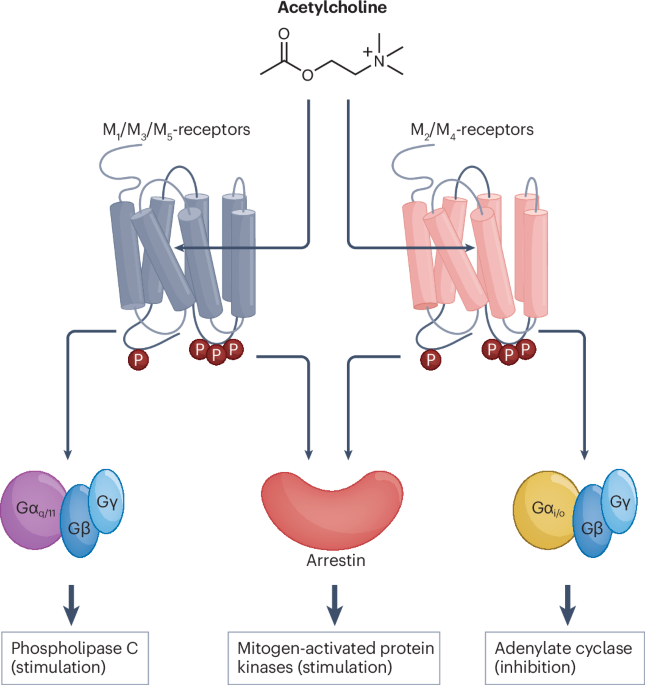
A golden age of muscarinic acetylcholine receptor modulation in neurological diseases
- Select a language for the TTS:
- UK English Female
- UK English Male
- US English Female
- US English Male
- Australian Female
- Australian Male
- Language selected: (auto detect) - EN
Play all audios:

Over the past 40 years, the muscarinic acetylcholine receptor family, particularly the M1-receptor and M4-receptor subtypes, have emerged as validated targets for the symptomatic treatment
of neurological diseases such as schizophrenia and Alzheimer disease. However, despite considerable effort and investment, no drugs have yet gained clinical approval. This is largely
attributable to cholinergic adverse effects that have halted the majority of programmes and resulted in a waning of interest in these G-protein-coupled receptor targets. Recently, this trend
has been reversed. Driven by advances in structure-based drug design and an appreciation of the optimal pharmacological properties necessary to deliver clinical efficacy while minimizing
adverse effects, a new generation of M1-receptor and M4-receptor orthosteric agonists and positive allosteric modulators are now entering the clinic. These agents offer the prospect of novel
therapeutic solutions for ‘hard to treat’ neurological diseases, heralding a new era of muscarinic drug discovery.
The author thanks the Wellcome Trust, who provided a Collaborative Award (201529/Z/16/Z) to A.B.T., and the generous donations of the Rice family, and Alan and Ann Boyd. Thanks also to C.
Jones (Vanderbilt University) for proofreading and advice.
Centre for Translational Pharmacology, School of Molecular Biosciences, The Advanced Research Centre, University of Glasgow, Glasgow, UK
A.T. is fully employed by the University of Glasgow but is also co-founder and CEO of the spin-out company Keltic Pharma Therapeutics Ltd, which has an interest in targeting muscarinic
receptors in neurological disease.
Nature Reviews Drug Discovery thanks Jan Jakubik, Daniel Foster and Christian Felder for their contribution to the peer review of this work.
Publisher’s note Springer Nature remains neutral with regard to jurisdictional claims in published maps and institutional affiliations.
Anyone you share the following link with will be able to read this content:
